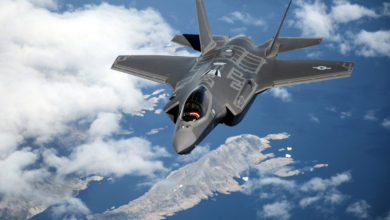The US Air Force XQ-58A Valkyrie unmanned aerial vehicle recently flew longer, higher, and with a heavier mission weight than previous tests.
The Kratos drone also sustained encrypted communication with “redundant radio/communication packages” due to range constraints during the demonstration. It managed to navigate at the landing site in a “simulated loss of communications scenario,” the company wrote in a statement.
The capability will enable the stealthy subsonic platform to evade enemy detection and tracking of its radio frequency communications while returning to base, the statement added.
Manned-Unmanned Teaming Next Year
This was the first XQ-58A Block 2 flight out of 12 new production airframes, the last of which is reportedly expected to be produced by next year.
Kratos developed the aircraft as part of the USAF Research Laboratory’s Low-Cost Attritable Aircraft Technology portfolio to develop a cheaper unmanned alternative to manned aircraft.
The service aims to use the aircraft in manned-unmanned teaming experiments from fall 2023.
In the meantime, the Autonomous Aircraft Experimentation team is building a “data-storage and simulation environment to gather operator feedback and integrate their input into the autonomy software development process,” the service wrote in a statement.
“The XQ-58A could host a variety of flight autonomy software solutions that were first tested in the simulator, including those from the Skyborg Autonomy Control System and others provided by third-party government and industry partners.”

Features
The 30-foot (9-meter) by 27-foot (8-meter) drone has a maximum take-off weight of 6,000 pounds (2,721 kilograms) and an internal payload capacity of 600 pounds (272 kilograms).
The drone flies at a maximum speed of 548 miles (882 kilometer) an hour, a range of 5,556 kilometers (3,452 miles), and a flight ceiling of 45,000 feet (13,716 meters).
Runway-Independence
The low-cost autonomous aircraft uses a rocket-assisted static rail launcher to take off and a parachute to land.
The aircraft’s runway independence allows it to rapidly deploy from austere locations and areas nearer to the target location.
It is controlled from a ground station or an airborne aircraft, with onboard throttle settings obeying commands and a computer deciding on the best flight path.












